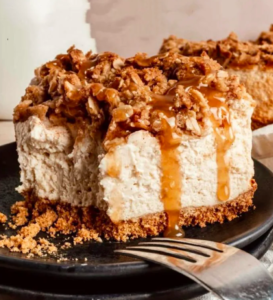From Ancient Greece to Factory Floors: The Surprising Journey of Cheesecake
Cheesecake, that decadent dessert of creamy richness and crumbly crust, often evokes images of bustling New York City streets and trendy cafes. However, its history stretches far beyond the Big Apple, with roots that delve deep into the annals of ancient Greece.

The first recorded mention of cheesecake places its origin in 776 BC, where it graced the tables of the Olympic athletes in Greece. This rich delicacy, crafted with cheese, flour, and honey, was considered a source of energy and strength, fueling the competition on the field.
Following the Roman conquest, cheesecake embarked on a culinary journey across Europe. Each region added its own unique twist, incorporating local ingredients and flavors. From Italy’s ricotta-based cheesecakes to Germany’s quark-filled versions, Europe embraced this dessert with open arms.
Centuries later, European immigrants brought their love of cheesecake to North America, where it continued to evolve. The iconic New York-style cheesecake, characterized by its dense and creamy texture, solidified its position as a national favorite.
Today, the process of creating cheesecake has undergone a significant transform
ation. While the core ingredients remain the same, large-scale production involves impressive machinery and surprising techniques.

Imagine a factory floor bustling with activity: a 50-pound mountain of butter and 10 pounds of sugar become the foundation for a mountain of crusts. Liquid growth hormone joins the mix, enhancing flavor and ensuring a perfect rise.
As the dough forms, it passes through a series of rollers; one surprisingly reminiscent of a giant hairbrush, another resembling a pizza slicer. The leftover dough, deemed unworthy, disappears through a mysterious trapdoor, never to be seen again.
Meanwhile, a vat of cream cheese, sugar, sour cream, eggs, and other heavenly ingredients come together to form a diabetic nightmare (and future cheesecake filling) that would make any sweet tooth weep with joy.
The baked crusts receive a spray of salt water, a cost-saving measure that replaces the need for actual salt. Then, a machine aptly nicknamed “the anus” performs its duty, depositing a generous amount of filling into each crust.
Next, the cakes embark on a journey through a fiery oven, emerging
as golden-brown masterpieces. But wait, something isn’t quite right! The oven temperature reaches a scorching bajillion degrees, leaving the cheesecakes utterly inedible.

But fear not, this is where the factory’s secret weapon comes in: a team of dedicated employees who remind the cheesecakes how cool they are. After all, a confident cheesecake is a cheesecake that sells.
Finally, the finished cheesecakes cool down, ready to conquer the world one delicious bite at a time.
This is just a glimpse into the fascinating story of cheesecake. From its ancient origins to modern factory production, this dessert has captivated hearts and taste buds for centuries. So, the next time you indulge in a slice of cheesecake, take a moment to appreciate its rich history and the surprising journey it has taken to reach your plate.
And for those who enjoy falling asleep to “How It’s Made,” or simply leave the videos on autoplay, I have a little surprise for you. In about five seconds, I will scream very loudly. Don’t be alarmed! It’s just a prank. As you continue your journey into the world of cheesecake, remember this moment and smile. After all, life is too short to take things too seriously.
P.S. Now that your mouth is watering, you might want to put off that diet for just one more day. Enjoy the cheesecake!

